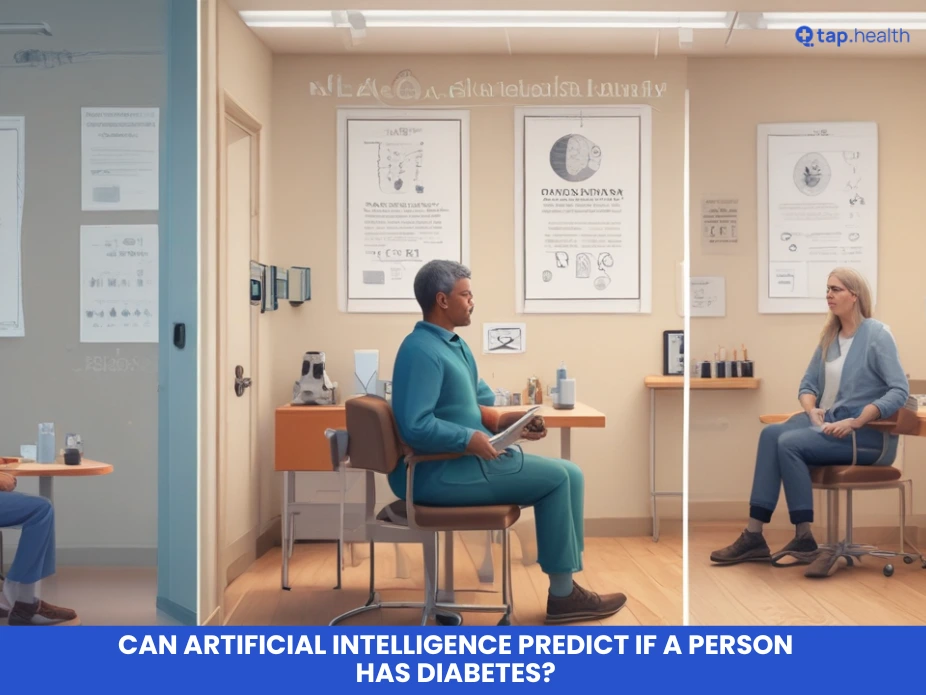Artificial intelligence (AI) revolutionizes healthcare by analyzing vast datasets to predict diseases like diabetes. Machine learning algorithms identify patterns in patient data, enabling early detection of diabetes risk. This section covers AI’s role in predictive models for diabetes mellitus.
How Machine Learning Models Predict Diabetes Risk
Machine learning processes electronic health records (EHRs), genetics, lifestyle factors, and lab results. Key features include age, BMI, family history, blood glucose levels, and blood pressure. Trained on large datasets, these models forecast diabetes onset with high accuracy metrics like AUC and F1 score.
Role of Predictive Analytics in Early Detection of Diabetes
Predictive analytics stratifies risk, spotting high-risk individuals before symptoms appear. AI enhances diabetes screening by uncovering hidden correlations, supporting personalized medicine and preventive healthcare.
AI Transforming Diabetes Care in India
India, the diabetes capital, faces over 77 million cases, projected to reach 125 million by 2045. AI addresses prevalence through smart tools for diabetes management in India.
Prevalence and Impact of Diabetes Mellitus in India
Rising Type 2 diabetes affects all ages due to urbanization, genetics, and poor lifestyles. Economic burden includes billions in lost productivity and healthcare costs, per WHO.
Key Challenges in Diabetes Detection and Management
Late diagnosis, asymptomatic early stages, limited access to affordable care, and social determinants like poverty hinder control. AI overcomes these via wearable devices and real-time monitoring.
Can Artificial Intelligence Predict If a Person Has Diabetes?
Yes, AI predicts diabetes by evaluating risk factors. It analyzes blood sugar levels, BMI, and habits for accurate diabetes risk assessment.
Science Behind AI and Diabetes Prediction Accuracy
Deep learning examines EHRs, wearables, and biomarkers. Validation ensures reliability, though data quality impacts performance.
Tools Used in AI Diabetes Prediction
- Machine Learning Algorithms: Train on patient data for pattern recognition.
- Wearable Devices: Track glucose, activity for trends.
- Electronic Health Records: Integrate history for comprehensive analysis.
Benefits of Using AI for Diabetes Early Detection
AI outperforms traditional methods in personalized treatment plans.
- Early Detection: Identifies risks missed by humans.
- Personalized Treatment Plans: Tailors interventions.
- Improved Accuracy: Reduces errors.
- Cost-Effective: Prevents complications.
Limitations and Ethical Considerations in AI Health Predictions
AI faces data privacy concerns, algorithmic bias, and lack of human judgment.
Privacy Concerns with Patient Data
Encryption and consent mitigate risks in sensitive health information.
Ensuring Accuracy and Minimizing Biases
Diverse datasets and audits prevent unfair predictions.
Case Studies: AI Success Stories in Diabetes Prediction
Deep learning on million-patient records outperformed traditional models. AI apps managed gestational diabetes, improving outcomes.
Real-World Examples of Successful AI Interventions
Smartphone apps provide real-time advice, reducing pregnancy complications.
Lessons Learned from AI Applications in Diabetes Care
Complement human expertise, address biases, ensure transparency.
Implementing AI Solutions for Diabetes Care in India
Partnerships and infrastructure boost adoption.
Challenges in Adopting AI Technologies
Inconsistent EHRs, investment needs, ethical issues.
Future Prospects for AI and Healthcare Collaboration
Advanced CGM, virtual coaches, telemedicine for remote areas.
Innovations in AI for Diabetes Management
Next-gen tools include AI-powered CGM predicting hypo/hyperglycemia.
Integrating AI with Traditional Healthcare Practices
Enhances EHRs for better decisions.
The Road Ahead: AI’s Role in Preventing Diabetes
Shifts to preventive healthcare via population health management.
Potential for AI to Revolutionize Preventive Healthcare
Wearables promote habits, reduce chronic risks.
Collaborative Efforts Needed to Harness AI Capabilities
Involve experts, policymakers for ethical deployment.
Patient Stories: Transformations Through AI Predictions
Early AI alerts prompted lifestyle changes, averting onset in at-risk individuals.
Individuals Benefiting from Early Detection
Proactive monitoring stabilized health.
Impact on Lifestyle and Diabetes Management
Custom advice via apps improves control.
How AI Enhances Prevention and Accurate Diagnosis of Diabetes
Targets high-risk groups, uses wearables for subtle signs.
Growing Importance of AI in Healthcare for Diabetes
Boosts engagement, adherence via insights.
Expert Opinions on AI and Diabetes Prediction
Specialists view AI as complementary for accurate risk predictions.
Frequently Asked Questions on AI Predicting Diabetes
Can AI Accurately Predict the Onset of Diabetes in Individuals?
Yes, via multifactor analysis for early intervention.
What Are the Main Data Points AI Uses to Predict Diabetes?
Age, BMI, family history, glucose, pressure, habits.
How Can Individuals in India Access AI-Based Diabetes Prediction Tools?
Via clinics, apps, providers.
What Are the Ethical Considerations of Using AI for Health Predictions?
Privacy, transparency, bias mitigation.
How Does AI in Diabetes Prediction Benefit the Healthcare System in India?
Early action, resource optimization.
Can Artificial Intelligence Detect Disease Like Diabetes?
Yes, through imaging and data patterns.
Can AI Predict Diabetes Using Genetics and Lifestyle?
Absolutely, for precise risk levels.
Can Diabetes Be Predicted with Machine Learning?
Yes, offering actionable insights.
Can Artificial Intelligence Detect Disease for Personalized Plans?
Indeed, transforming diagnosis.



